Abstract
This study investigated the effects of a peer-mediated intervention on the social interaction of five triads comprised of preschoolers with autism and their typical peers. Strategies thought to facilitate interaction were selected based on analyses of a descriptive data base. Peers were taught to attend to, comment on, and acknowledge the behavior of their classmates with disabilities. These are behaviors preschoolers typically exhibit frequently, but that do not obligate responses to the same extent as questions and requests do. The ABCB reversal designs revealed that improved rates of social interaction during play were clearly associated with the peer intervention for 4 of the 5 children with autism. This intervention offers an alternative peer-intervention package for increasing interaction between children with and without disabilities.
Full text
PDF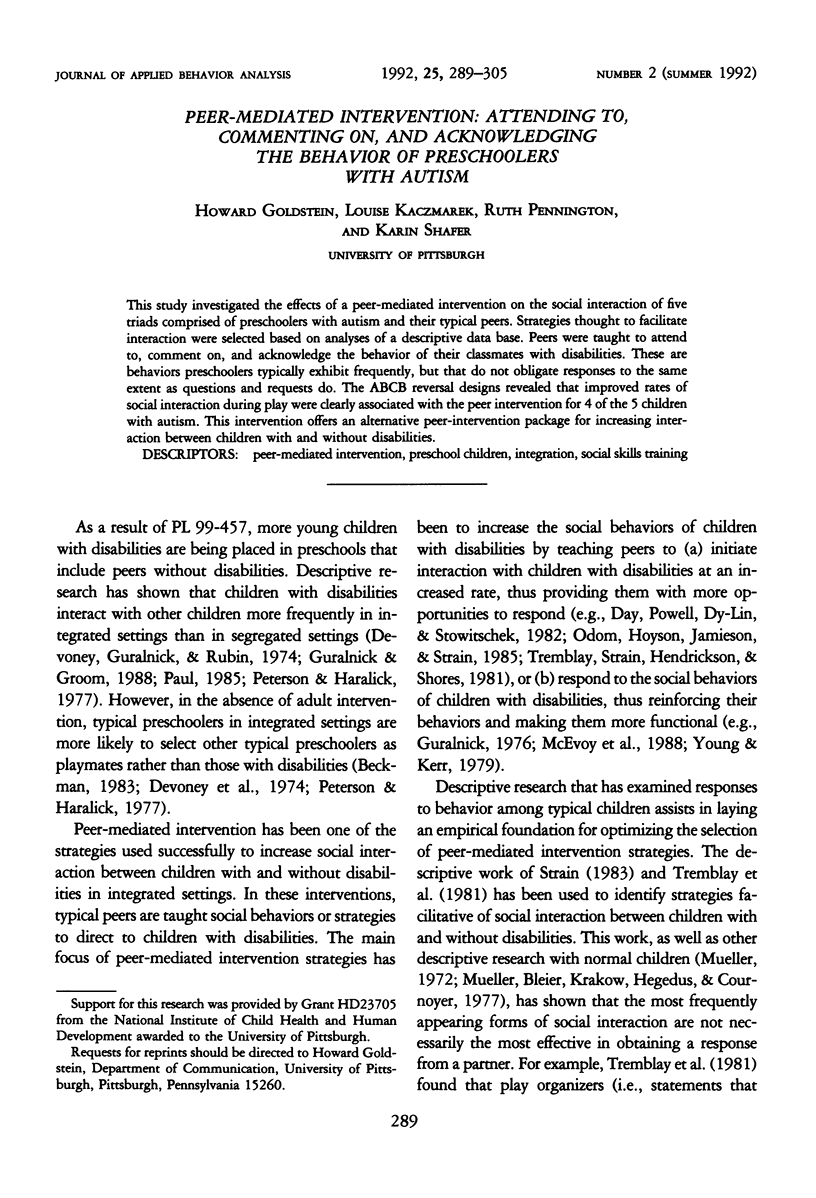
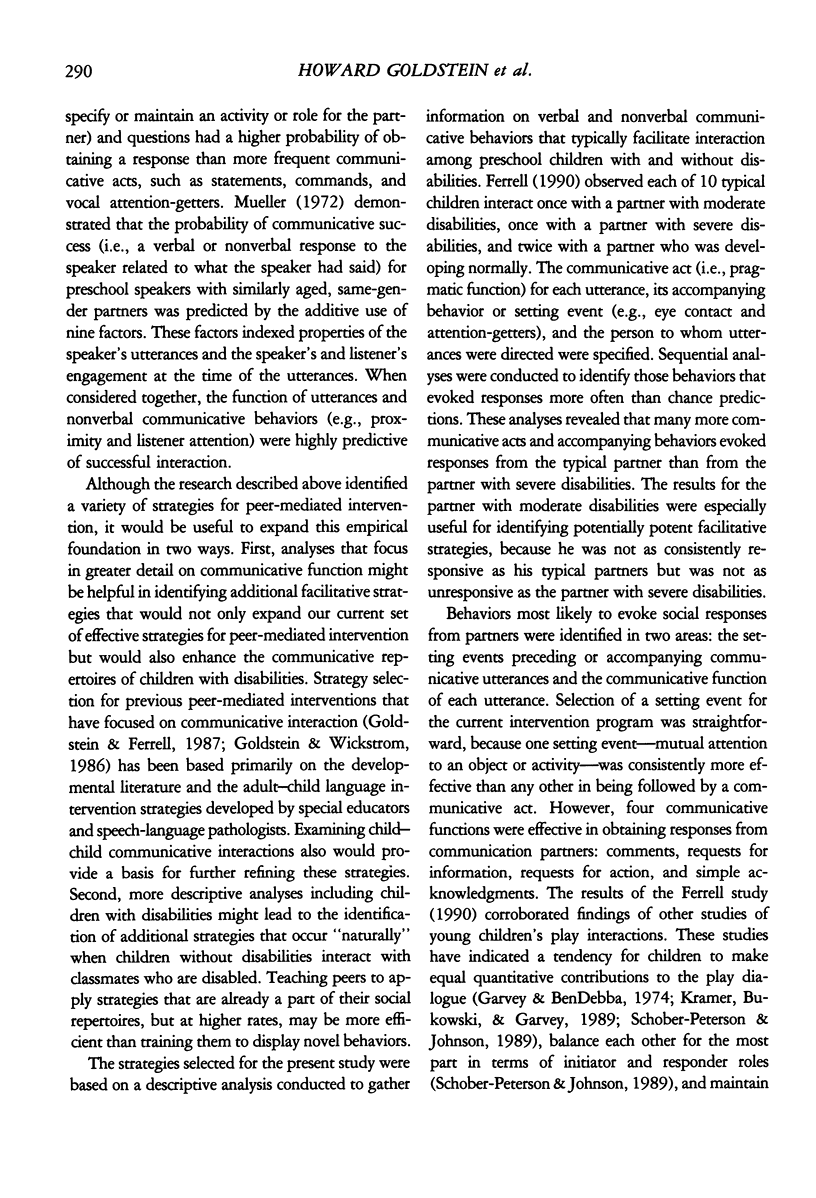
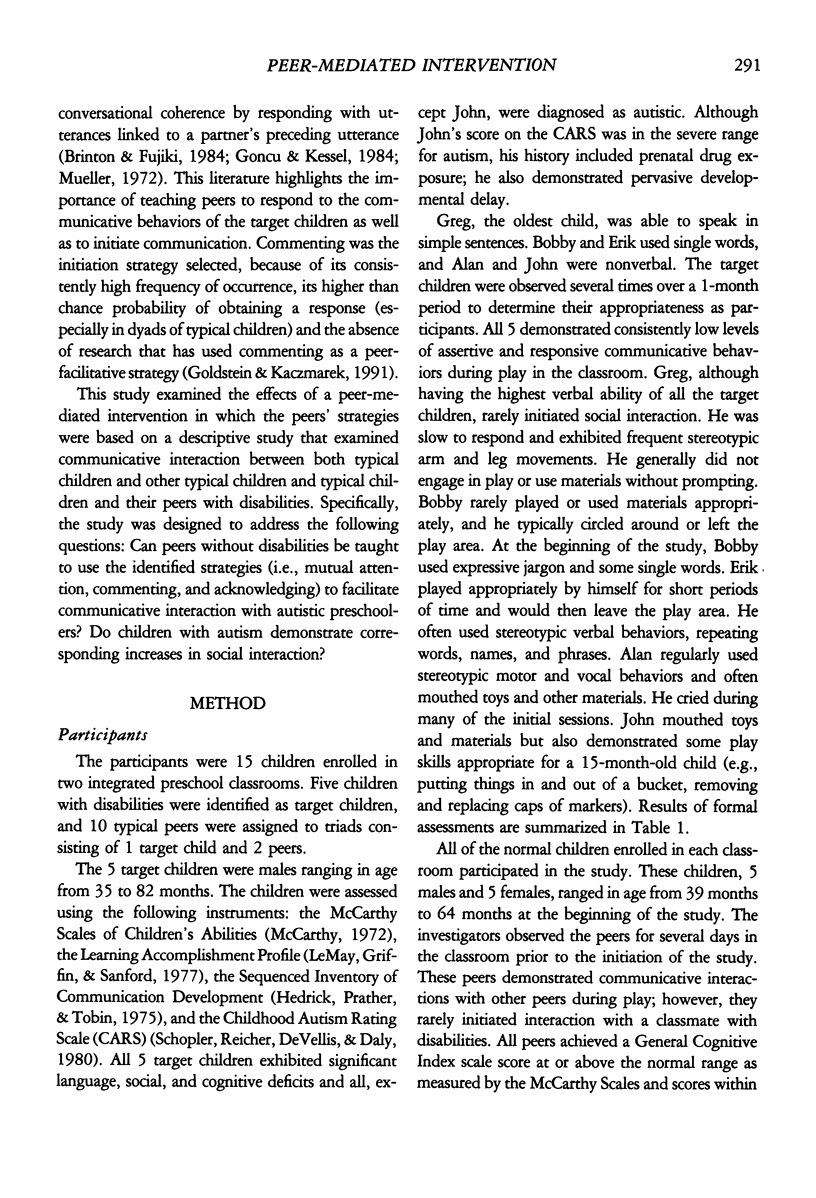
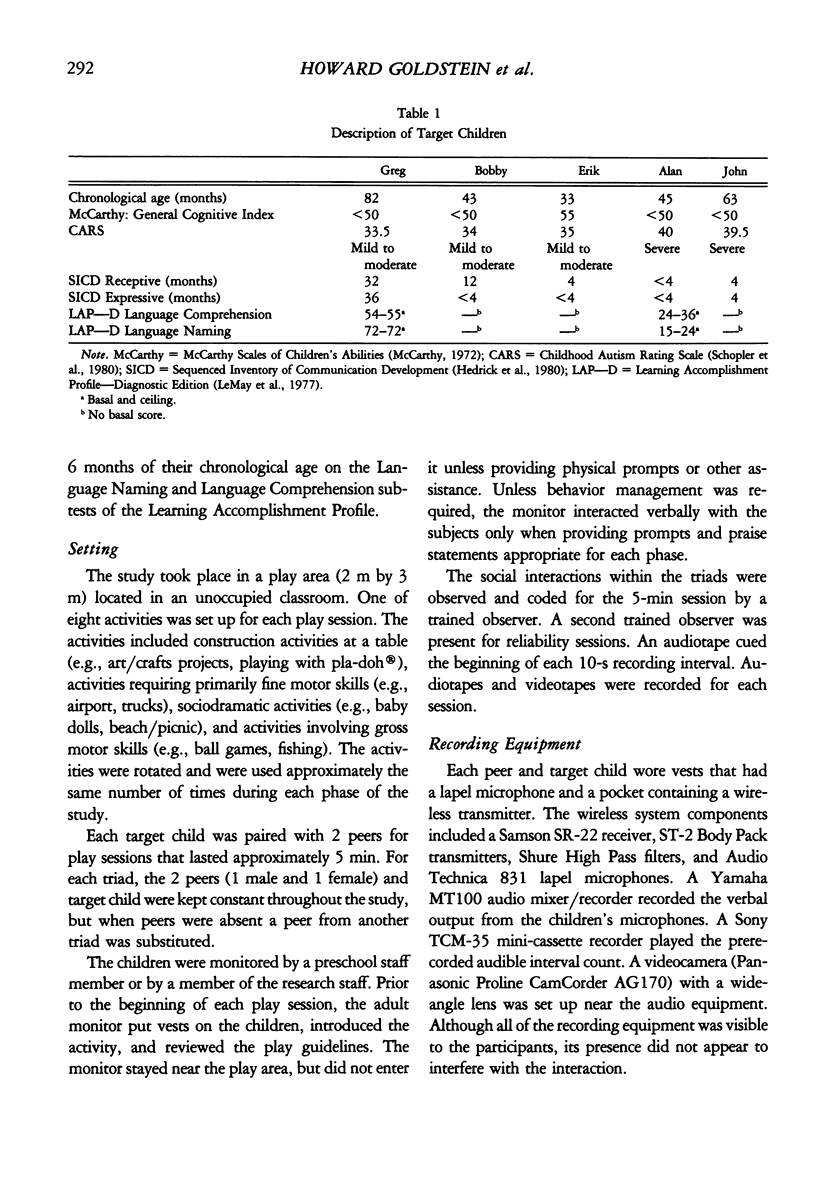
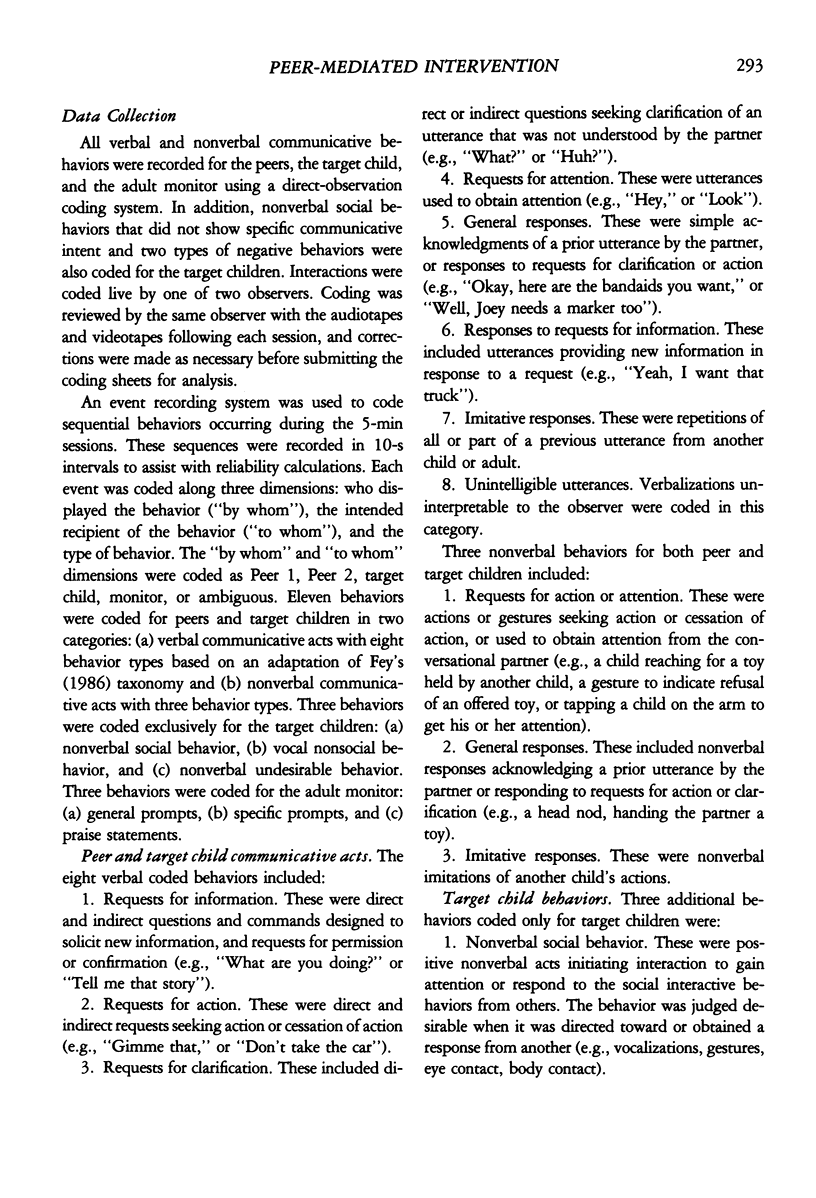
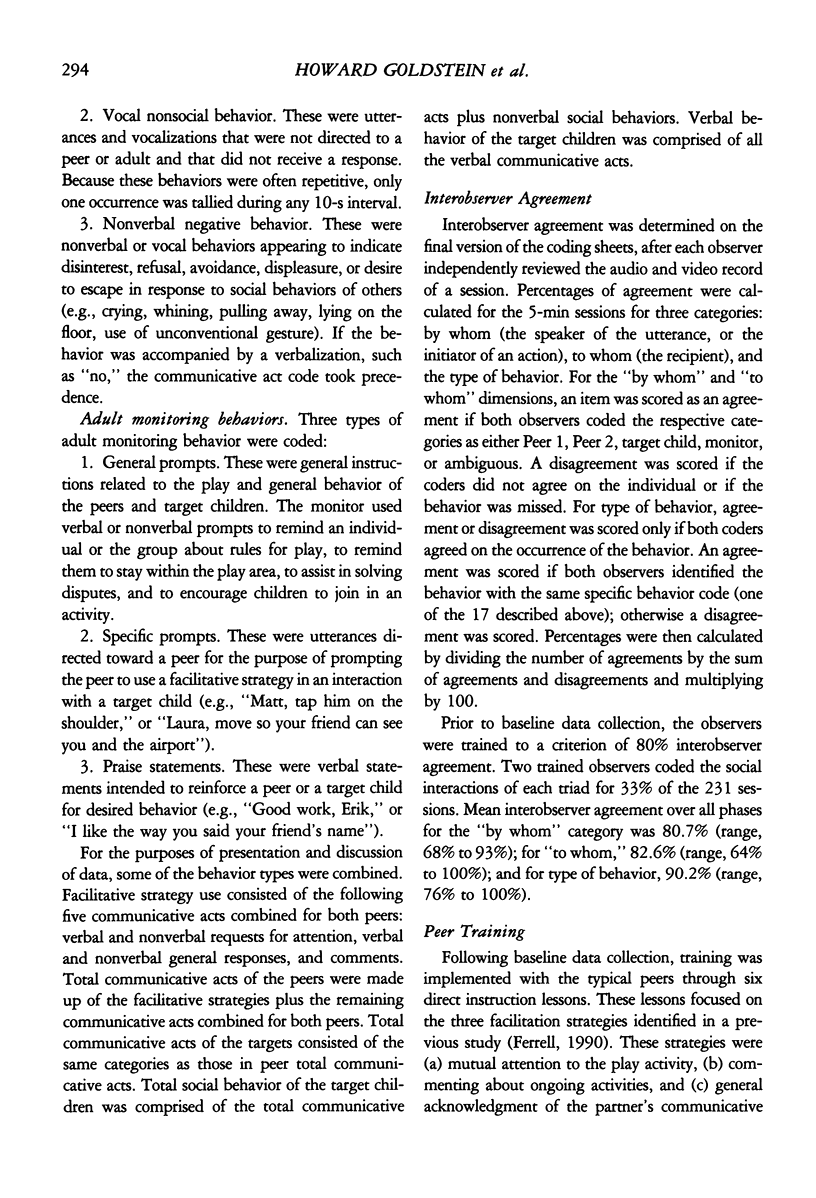
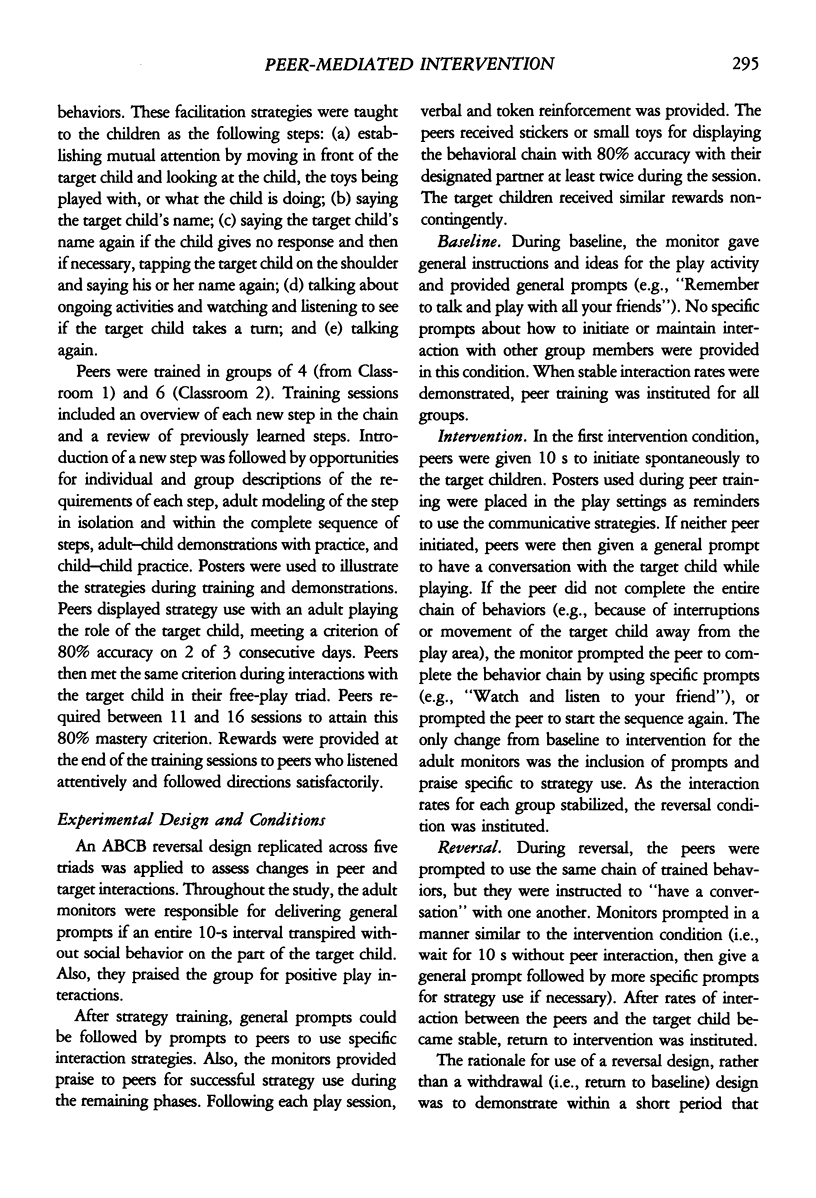
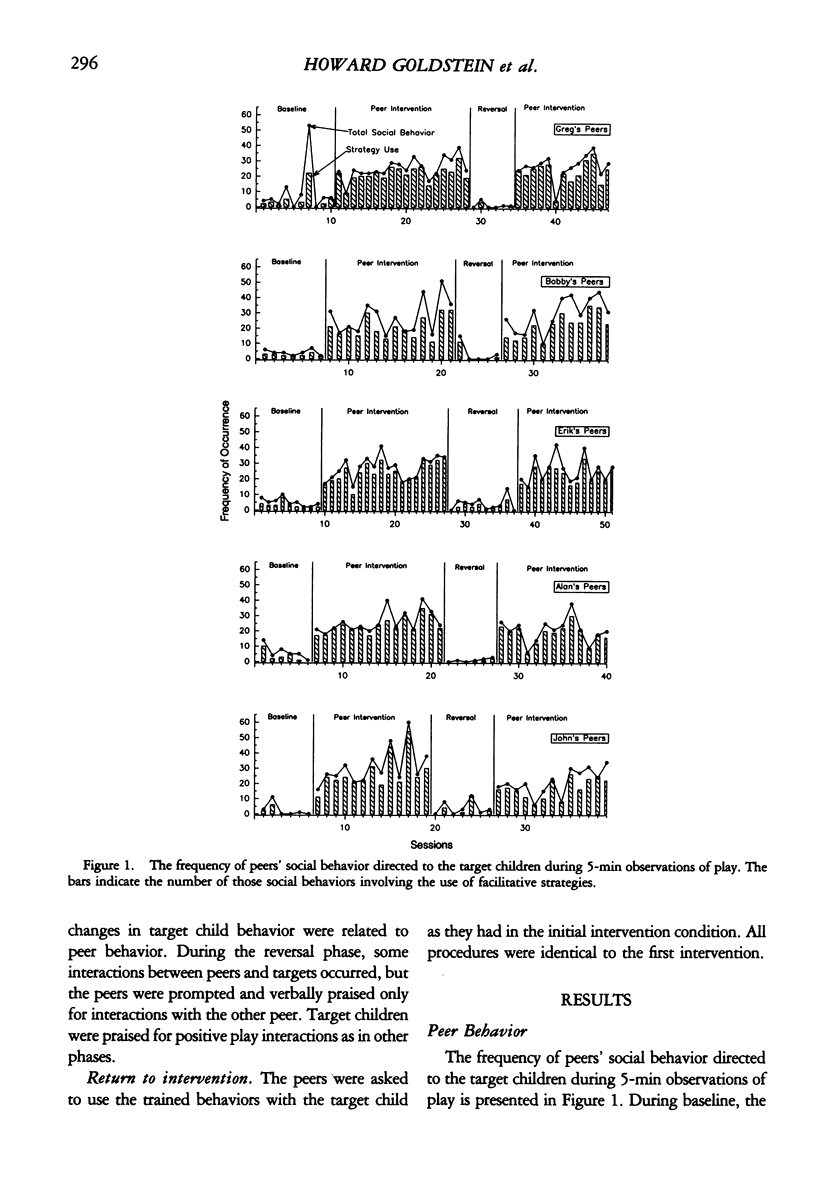
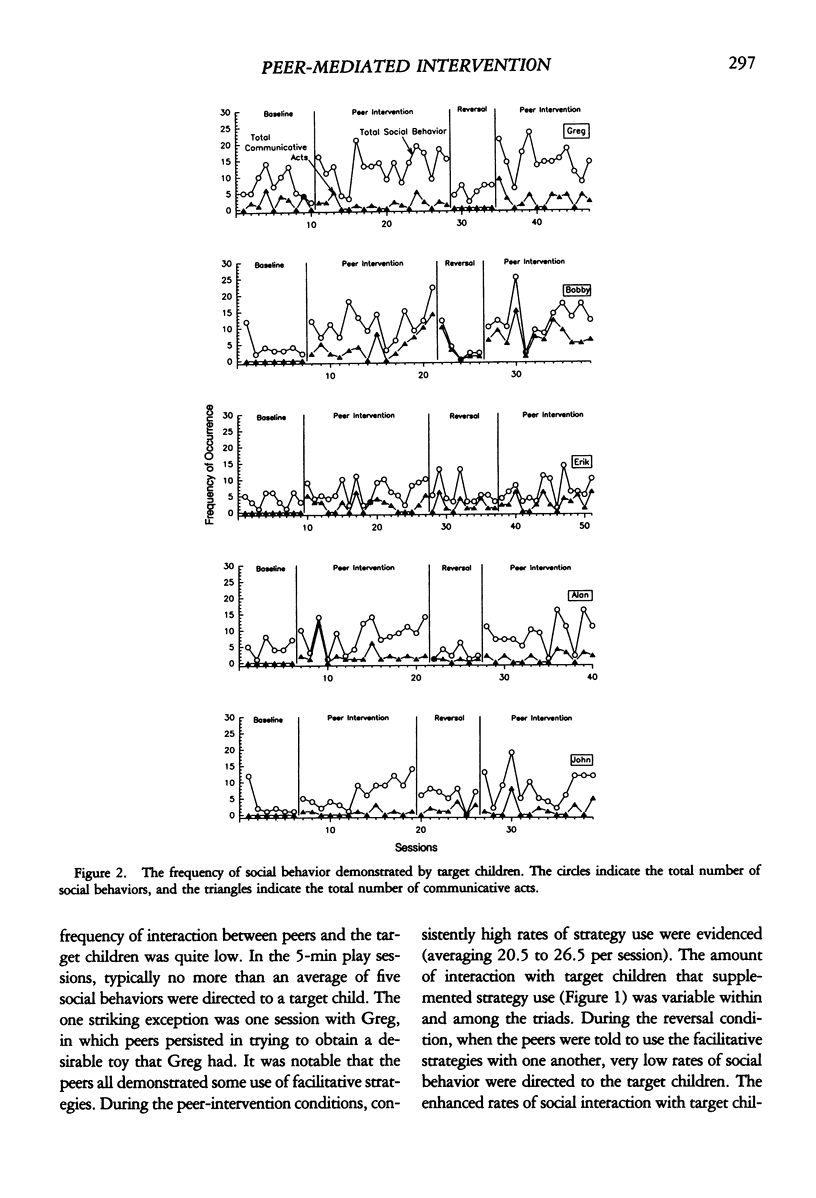

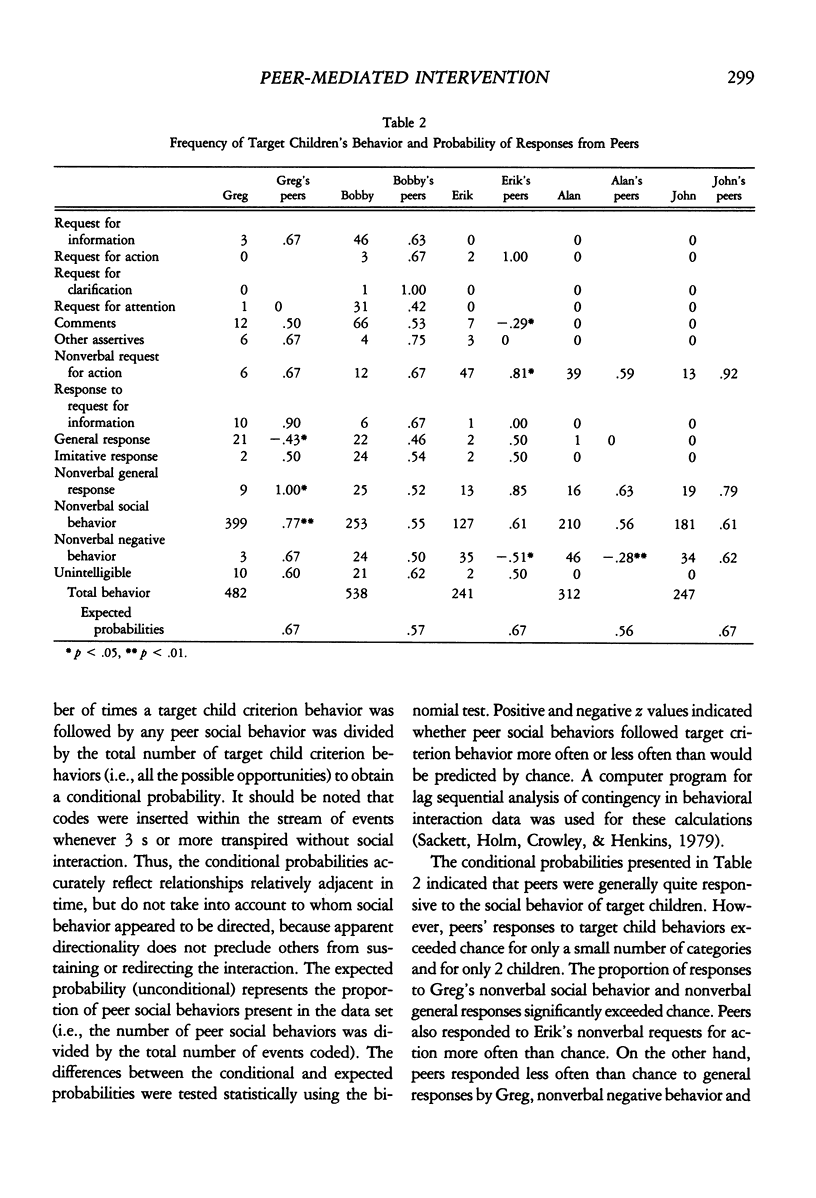
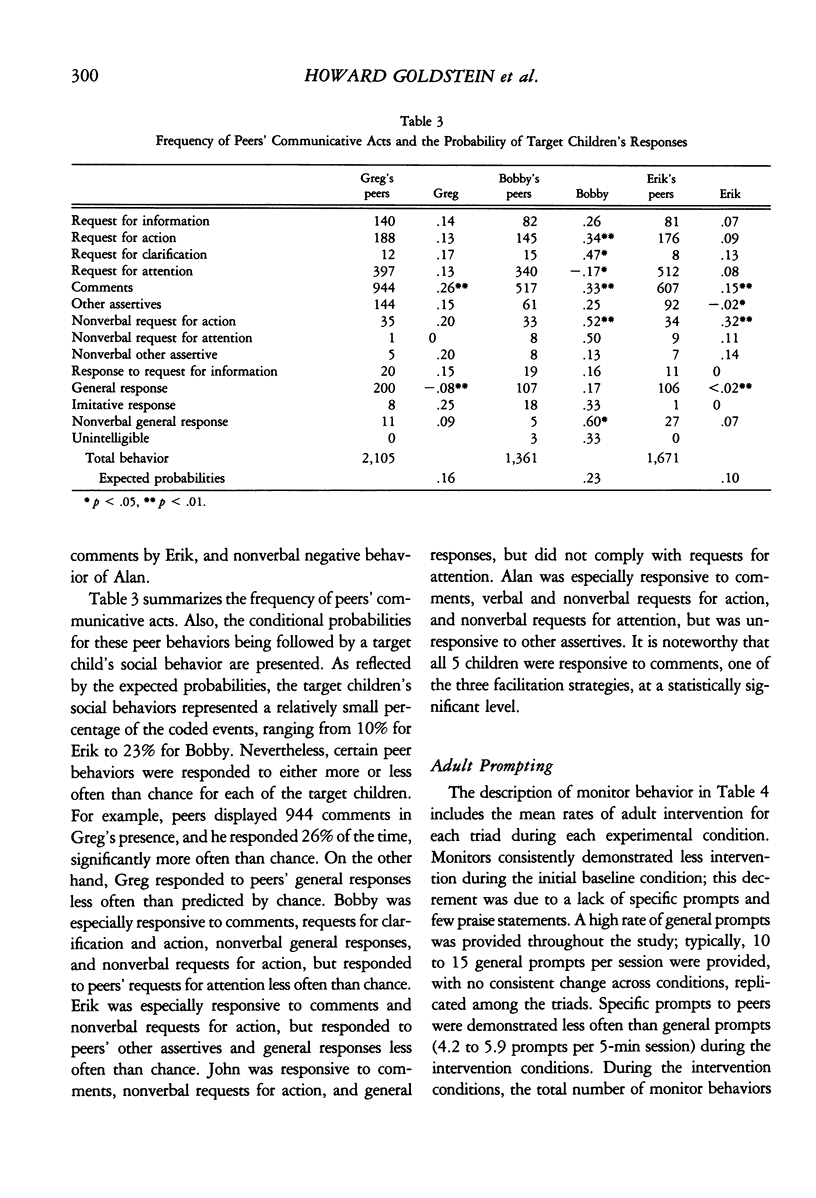
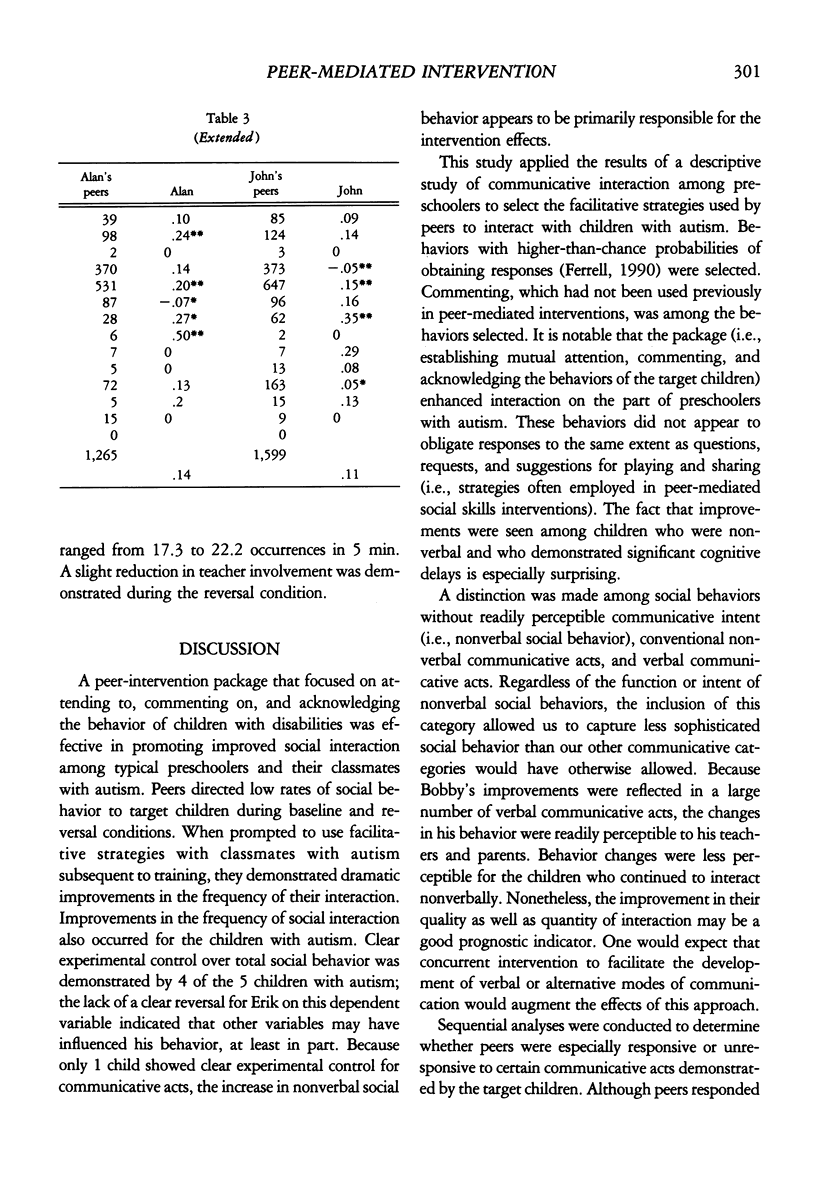
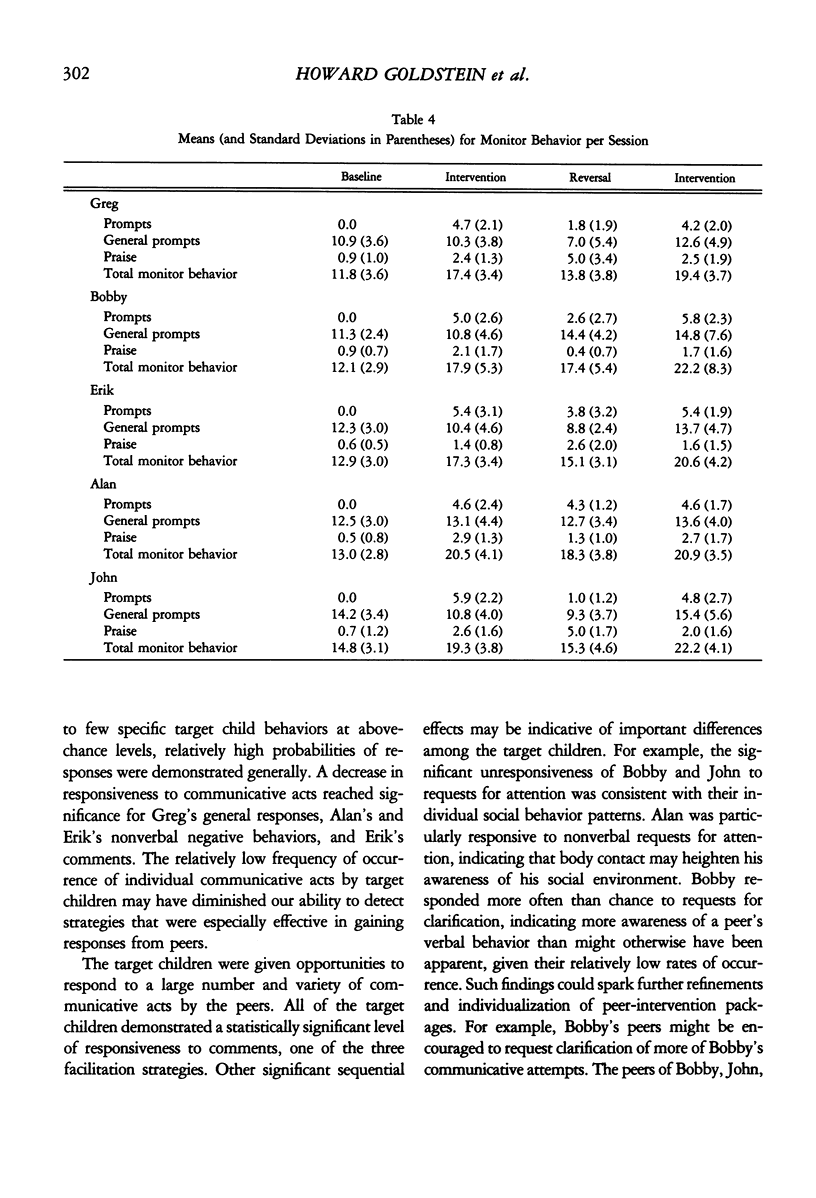
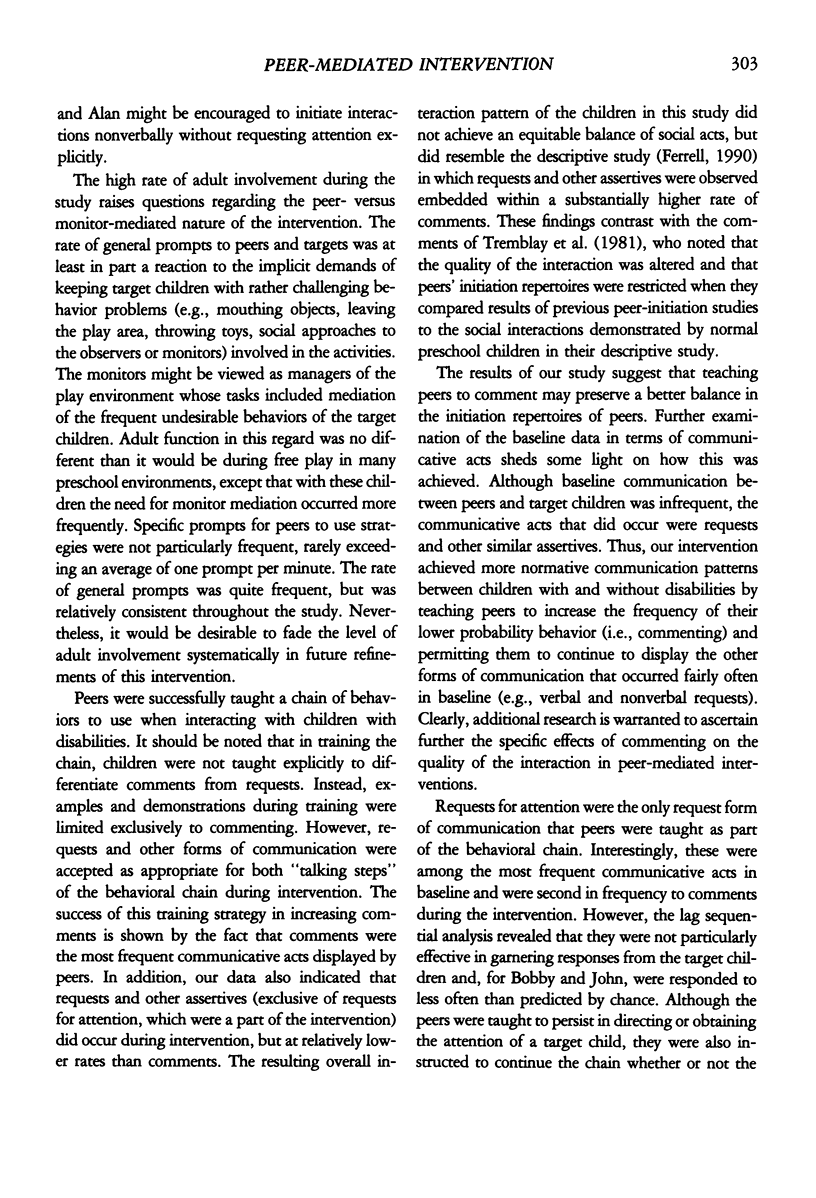
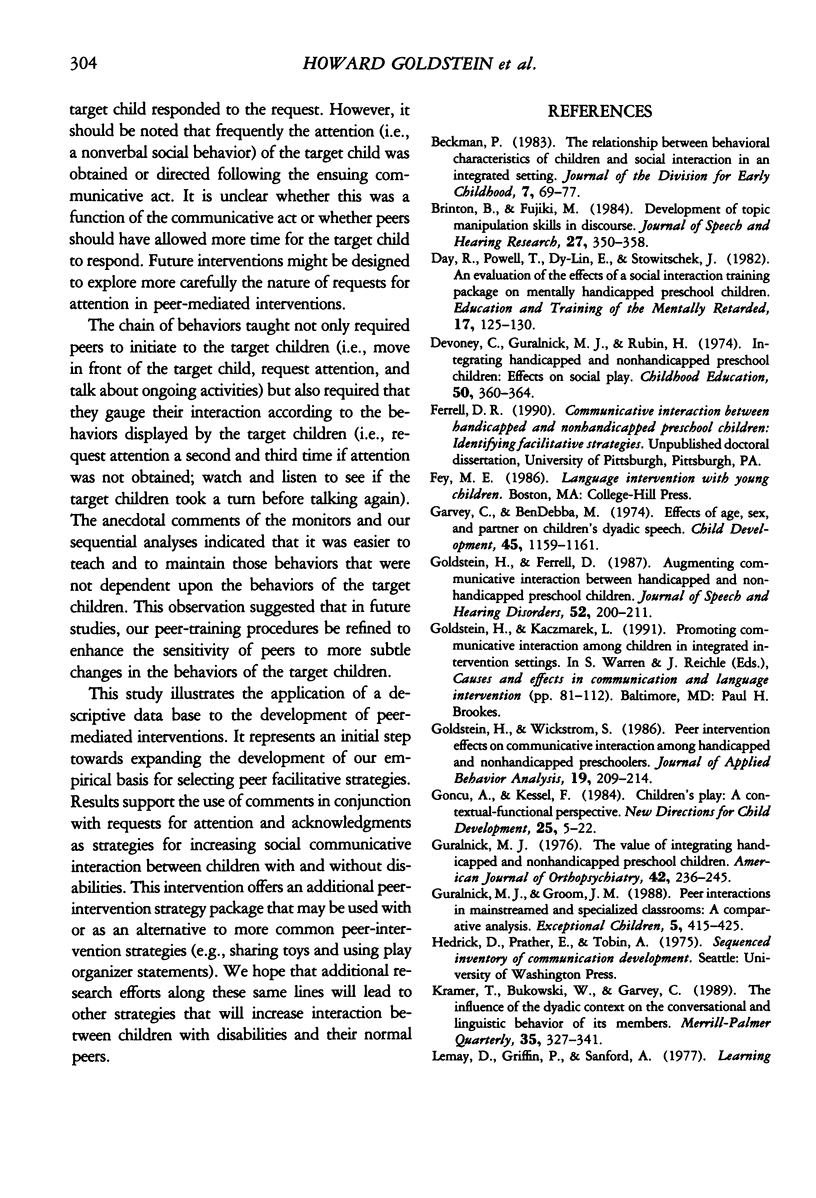
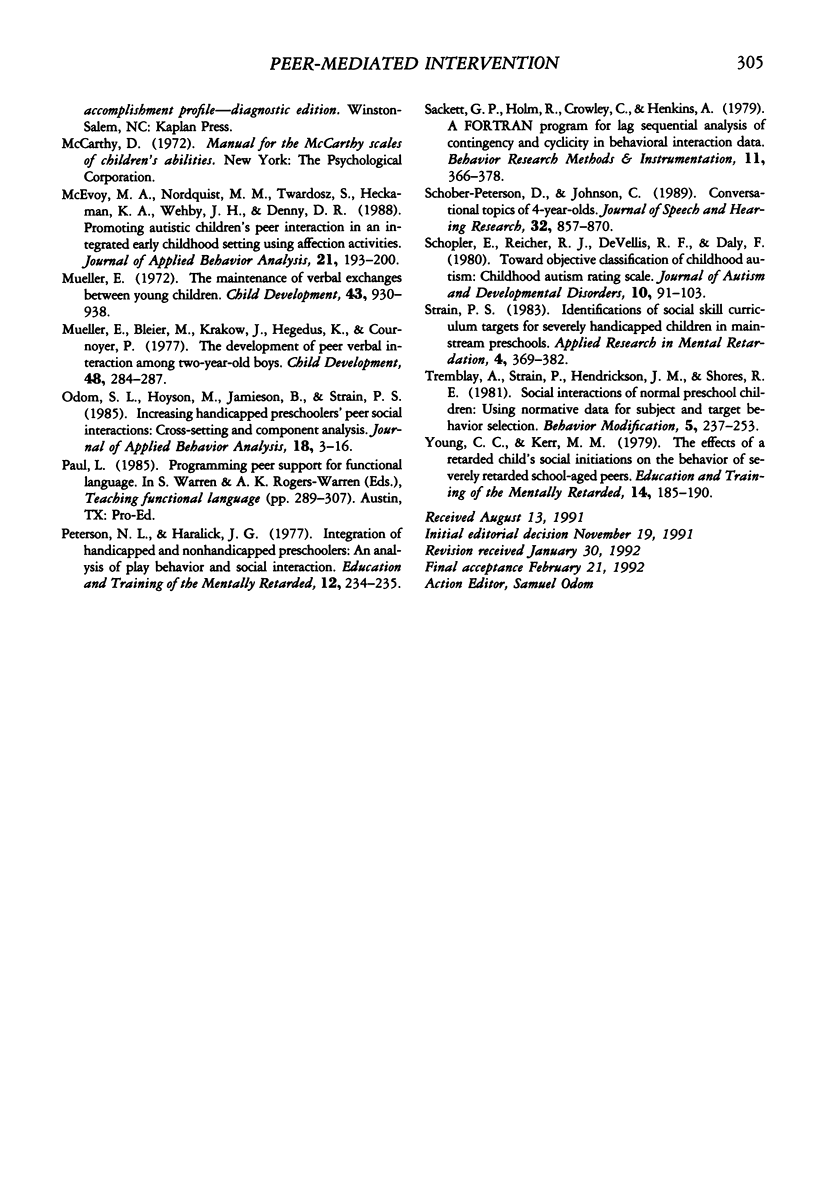
Selected References
These references are in PubMed. This may not be the complete list of references from this article.
- Brinton B., Fujiki M. Development of topic manipulation skills in discourse. J Speech Hear Res. 1984 Sep;27(3):350–358. doi: 10.1044/jshr.2703.350. [DOI] [PubMed] [Google Scholar]
- Garvey C., BenDebba M. Effects of age, sex, and partner on children's dyadic speech. Child Dev. 1974 Dec;45(4):1159–1161. [PubMed] [Google Scholar]
- Goldstein H., Ferrell D. R. Augmenting communicative interaction between handicapped and nonhandicapped preschool children. J Speech Hear Disord. 1987 Aug;52(3):200–211. doi: 10.1044/jshd.5203.200. [DOI] [PubMed] [Google Scholar]
- Goldstein H., Wickstrom S. Peer intervention effects on communicative interaction among handicapped and nonhandicapped preschoolers. J Appl Behav Anal. 1986 Summer;19(2):209–214. doi: 10.1901/jaba.1986.19-209. [DOI] [PMC free article] [PubMed] [Google Scholar]
- Guralnick M. J., Groom J. M. Peer interactions in mainstreamed and specialized classrooms: a comparative analysis. Except Child. 1988 Feb;54(5):415–425. doi: 10.1177/001440298805400504. [DOI] [PubMed] [Google Scholar]
- Guralnick M. J. The value of integrating handicapped and nonhandicapped preschool children. Am J Orthopsychiatry. 1976 Apr;46(2):236–245. doi: 10.1111/j.1939-0025.1976.tb00924.x. [DOI] [PubMed] [Google Scholar]
- McEvoy M. A., Nordquist V. M., Twardosz S., Heckaman K. A., Wehby J. H., Denny R. K. Promoting autistic children's peer interaction in an integrated early childhood setting using affection activities. J Appl Behav Anal. 1988 Summer;21(2):193–200. doi: 10.1901/jaba.1988.21-193. [DOI] [PMC free article] [PubMed] [Google Scholar]
- Odom S. L., Hoyson M., Jamieson B., Strain P. S. Increasing handicapped preschoolers' peer social interactions: cross-setting and component analysis. J Appl Behav Anal. 1985 Spring;18(1):3–16. doi: 10.1901/jaba.1985.18-3. [DOI] [PMC free article] [PubMed] [Google Scholar]
- Schober-Peterson D., Johnson C. J. Conversational topics of 4-year-olds. J Speech Hear Res. 1989 Dec;32(4):857–870. doi: 10.1044/jshr.3204.857. [DOI] [PubMed] [Google Scholar]
- Schopler E., Reichler R. J., DeVellis R. F., Daly K. Toward objective classification of childhood autism: Childhood Autism Rating Scale (CARS). J Autism Dev Disord. 1980 Mar;10(1):91–103. doi: 10.1007/BF02408436. [DOI] [PubMed] [Google Scholar]
- Strain P. S. Identification of social skill curriculum targets for severely handicapped children in mainstream preschools. Appl Res Ment Retard. 1983;4(4):369–382. doi: 10.1016/0270-3092(83)90036-x. [DOI] [PubMed] [Google Scholar]


